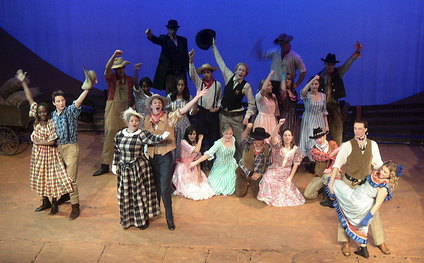 As I grow up (an incredibly slow and painful process, especially at age 60), I find myself, in spite of myself, learning things. One of the most revealing lessons I’ve more fully grasped in the last year is that arts marketers and community engagement advocates can and should be the best of friends.
As I grow up (an incredibly slow and painful process, especially at age 60), I find myself, in spite of myself, learning things. One of the most revealing lessons I’ve more fully grasped in the last year is that arts marketers and community engagement advocates can and should be the best of friends.
On first consideration, this is far from obvious. The two have vastly different ultimate goals, vastly divergent frames of reference. Marketers have as their core responsibility one pillar of the sustainability of the organization for which they work, sometimes translated as “butts in seats/eyes on walls.” Community advocates are focused on the community and its well-being. Because their work is in corporate settings (usually not-for-profit corporations, but corporations nonetheless), arts marketers have a corporate frame of reference. Community advocates, often working outside of the establishment, sometimes have a distrust of corporations. The two “camps” are ripe for an It’s a Wonderful Life dichotomy, not quite 99% vs. 1%, but in the ballpark.
I have come to be excited about the possibility of the two working together. Several things, in addition to the goals/frames of reference issues I just highlighted have gotten in the way of this in the past. Since results and targets are what is communicated outside of marketing meetings, marketing often looks like sales. I do know (and have always known) that the two have never been equated by marketers worth their salt, but its an easy trap into which to fall. Also, and this is significant in understanding misunderstandings, sales agents have thought and sometimes still do think of themselves as (and call themselves) marketers. This is not the fault of people who are marketers, but it gets in the way of grasping the differences between sales and marketing.
I also believe that over the last decade or two, arts marketing has changed. As the world has changed, arts marketers have come to understand more fully that relationship building (as a two-way enterprise) is a basic building block of their work. I don’t want to touch off a fire-storm by saying it’s a change, but if it’s not a change, I can say I never read much about this until relatively recently. Waiting in the Wings and Subscribe Now! dealt with relationships, but it was the one-way kind of relationship about which I’ve written before (One Way) rather than relationships rooted in reciprocal learning.
What is exciting to me is the potential for change that this represents. Marketers know the need for relationships outside the organization; they have a vested interest in relationship building. As insiders, they represent a mechanism for community-focused transformation in the arts establishment. Community advocates, as experts in relationship building outside corporate walls, represent a valuable resource for marketers. While there are differences in language and some history that might make trust initially difficult, let’s get these two groups together and enhance the vibrancy of the arts and of communities.
Engage!
Doug
Photo:![]() Some rights reserved by Mark Cartwright
Some rights reserved by Mark Cartwright

I’m worth my salt, Doug, and I’m happy to report that sales and marketing are two interdependent parts of the same process. Marketing stimulates demand and sales activates demand. The most successful projects I’ve been involved with over the last thirty years were those in which sales and marketing were seamlessly integrated. And the least successful were those where outdated organizational priorities relegated sales to an isolated, independent, lower-level status.
If you keep an eye on job title trends in the arts you’ll notice that senior marketing staff are beginning to bear the title “Director of Marketing and Sales” or “VP of Marketing and Sales.” This is in recognition of the elevation of sales from its former boiler room status and of the need for more active ways to leverage waning consumer demand.
Personally, I see no conflict between marketing/sales and community engagement. The only thing that separates best practices in sales and marketing from engagement is the goal orientation. As long as organizational leaders are clear about the difference between community well-being goals and participation and revenue goals, we territory folks can dance ’til the cows come home (provided, of course, they don’t trample the corn).